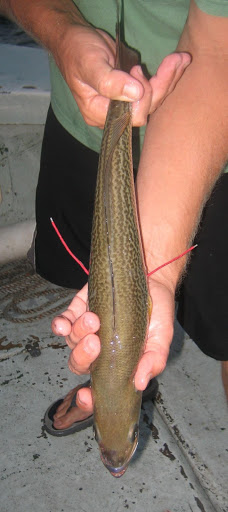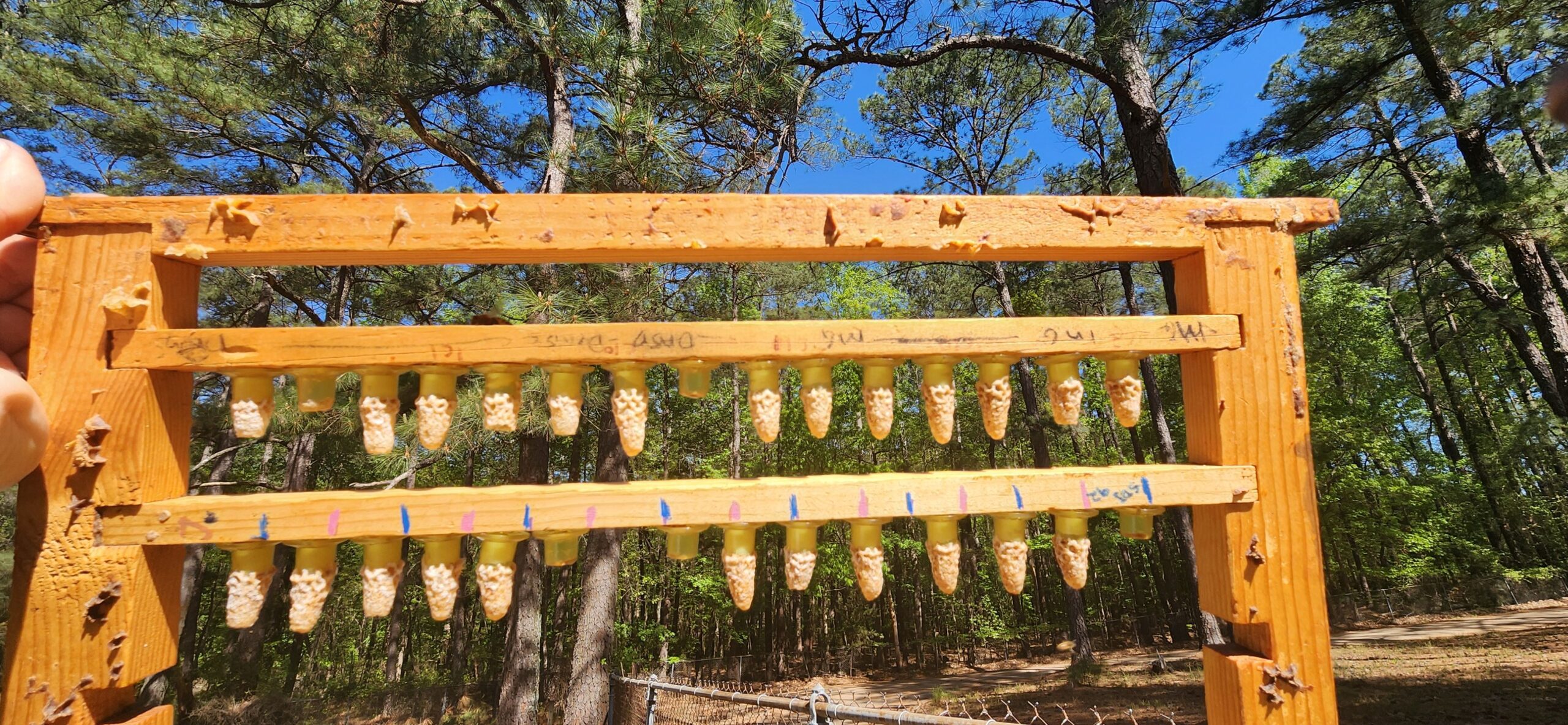Where’s the Weak Link in Weakfish Conservation?

Editor’s note: This is a guest post by PhD alum, Jacob Krause.
Weakfish have declined to record lows over the last 30 years. And despite a series of regulatory measures to reduce weakfish harvest, the stock has failed to rebuild. Our new study provides evidence that natural mortality may be much higher than previously estimated, and suggests that successful weakfish rebuilding will require strategies beyond harvest limitations.
Weakfish have exhibited a high mortality rate, in which a large proportion of the population die each year. Generally, mortality in fish populations consists of 1) natural mortality, when fish die of predation, adverse environmental events, or old age, and 2) fishing mortality, when fish die from interactions with fisheries, whether as the targeted species, as by-catch, or fail to survive after being released from an accidental capture. Compared to fisheries mortality, natural mortality is more difficult to reliably estimate, as these events are rarely observed in aquatic systems, leaving the best estimations dependent upon available information on fish life-histories, such as growth rate, age at sexual maturity, and maximum age.
In order to ensure sustainability of each fish population, fisheries management requires accurate and up-to-date estimations of natural mortality and fishing mortality. Using statistical models, fishery stock assessment scientists calculate fishing mortality from fishery catch, fish abundance surveys, and fish biology, which includes natural mortality values derived from fish life-history. And while stock assessments strive to minimize uncertainties in their estimates, fishing mortality is sensitive – that is, dependent – on the soundness of available, assumed natural mortality value.
In the 2006 weakfish stock assessment, an increased natural mortality was hypothesized to contribute to an increase in overall weakfish mortality. Since then, stock assessment scientists have developed a model to estimate natural mortality, in order to refine management strategies in the recovery of the weakfish population. Since every statistical model presents inherent uncertainty in their estimations, we elected to conduct a long-term tagging study to find the weak link in weakfish conservation.
Fish management relies on accurate estimates of fishing and natural mortality. For stocks that are not rebuilding it is important to understand why. Is this because of fishing mortality or natural mortality? If natural mortality is suspected like in weakfish, extra effort may be needed to estimate a species-specific natural mortality rate.

From November 2013 to May 2017, we captured 3,672 weakfish across North Carolina, and tagged them with reward tags worth $100. In order to claim the reward, the caller reported whether the fish was captured recreationally or commercially, the size of the fish, location and date of fish capture, and whether the fish was kept or released. These provided important insights to fish surviving initial tagging and handling, distance traveled since release, and pivotal information on fish natural mortality. The dataset for the second part of my research came from a partnership with the North Carolina Division of Marine Fisheries, investigating the changes in the catch and age of weakfish caught monthly in Pamlico Sound.
Using the combination of tag-returns and catch-at-age data, we were able to estimate total weakfish mortality, as well as delineate natural mortality from fishing mortality. When compared with existing values for natural mortality from the stock assessment, our findings indicated that natural mortality was a main contributor towards total weakfish mortality.
Our model found that during the years of 2015-2017, 97% of total mortality was attributable to natural mortality. In contrast, the stock assessment estimated that natural and fishing mortalities each contributed to approximately 50% of total mortality. The difference indicates that the stock assessment may have underestimated natural mortality and overestimated fishing mortality in recent years. For stocks such as weakfish that are not recovering after harvest restrictions, management needs to scrutinize the assumptions surrounding natural mortality, and recommend research and funding for studies that estimate species-specific natural mortality. We hope that our findings will be useful to future weakfish stock assessments.
Our work shows how important an accurate estimation of natural mortality can be to managing a fish population. The question now remains: what is causing the high natural mortality in the weakfish population? You’ll have to watch this space for more updates coming down the pipeline…
The article, “An integrated tagging and catch-curve model reveals high and seasonally-varying natural mortality for a fish population at low stock biomass,” was published in Fisheries Research on September 9, 2020. The authors include Jacob Krause, Joseph Hightower and Jeffrey Buckel from NC State’s Department of Applied Ecology, and Stephen Poland from North Carolina Division of Marine Fisheries. The research was supported by proceeds from the sale of North Carolina Coastal Recreational Fishing License (NCDEQ Task Order #5110).
- Categories:


